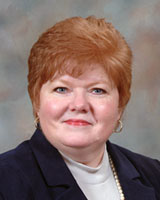Introduction
Research efforts by rural and remote researchers are often singularly conducted, driven by particular local needs, and disseminated with recommendations and implications for the local sites where the research was conducted. Geographic diversity in Canada accounts somewhat for these distinctions, as evidenced by coastal towns and fishing villages of the east and west coasts, rural farming and lumbering communities, rolling prairie lands, and northern isolated communities set on the tundra and Cambrian shield. Cultures vary within these settings, for example, the Tlicho (Dogrib) population in the Northwest Territories and the French in central rural Manitoba. This heterogeneity adds to the complexity of healthcare issues and delivery systems, continuing education, and the incorporation of new knowledge and practices across the country. The use of relevant research findings to inform clinical practice is a concern for all health professionals and users of the healthcare system. Generating a body of knowledge that is applicable to all rural and remote settings poses challenges because these settings are so diverse. For these reasons, collaborative and coordinated research is recommended for rural and remote researchers who are geographically and academically isolated1-3. Despite the diversity of rural and remote settings, certain commonalities enable a usable body of knowledge to be developed and translated for rural and remote clinicians.
The Rural Health Research Study
The project that informs the discussion in this article was a national investigation, Health Research: Accessible, Applicable and Useable for Rural Communities and Practitioners4. Several factors led to the formulation of the research questions. First, while the dissemination and uptake of research findings is widely accepted as essential to quality health care and informed decision making by both healthcare consumers and professionals, little is known about the use, availability and utility of research to those living or working in rural and remote areas5. Second, with the increased use of technology, the aging of society and the increased acuity level of patients, healthcare professionals are expected to remain informed of relevant research findings6. Third, while expected to have a wide range of current practice knowledge, healthcare professionals in rural and remote areas frequently experience both geographic and professional isolation7,8. Fourth, the literature identifies barriers to the use of current research in clinical practice that include lack of support, lack of time, lack of library resources, decreased funds and pressures of work9. Moreover, while the internet may contribute to the dissemination and potential uptake of healthcare research, the impact of the widespread use of the internet in rural and remote settings is not fully understood. Given these factors, the aim of this study was to understand the degree to which health professionals and community members in rural and remote settings access and use health research in Canada.
Rural was defined in this study as communities outside the commuting zone of centres with a population of 10 00010,11. Remote is often linked with rural, as in rural and remote nursing, and is associated with an isolated or less populated setting with varying models of health care shaped by a multiplicity of contexts12,13. In Canada, remote is frequently linked with outpost community health centres13.
The discussion in this article focuses on the collaborative process used by researchers across Canada in the data collection and analysis of the ethnographic component of the study. The study involved collaboration among various levels of learners and researchers: (i) undergraduate and masters research assistants local to the community research settings (herein collectively referred to as 'student research assistants'); (ii) doctoral students; (iii) newly graduated doctoral-prepared nurses; and (iv) experienced rural researchers. Collaborative teamwork was a focus from the study's inception and a key to its success. Several doctoral students located across the country who were interested in rural nursing were approached by the investigators about their interest in participating in the project. This presented a natural opportunity to involve doctoral students as collaborators in seven rural and remote provincial and territorial jurisdictions. These doctoral student research collaborators and the newly graduated doctoral nurse provided supervision to student research assistants and, in turn, received overall project guidance from the principal investigator.
Because the doctoral student collaborators and the doctoral collaborator were affiliated with a post-secondary institution in a study jurisdiction, they had ready access to undergraduate or masters students in a nursing program. Not only did this access provide the project with research assistants, it also facilitated identification of potential healthcare providers and community members because the student research assistants were actively engaged in clinical practice in these locales.
Because rural and remote communities have their own unique blend of culture, ethnicity, geography, political, technical, and economic contexts, it was beneficial to have undergraduate and masters students who were from and lived in rural communities collect data. The student researchers recruited participants, conducted interviews with healthcare professionals and community members and collected observational data via field notes and photography. The interviews explored participants' perspectives of the degree to which health professionals and community members access and use health research. Thus, the student research assistants and doctoral research collaborators gained research experience in a context that was of relevance to them. This approach maximized research capacity development among students in rural and remote settings14.
Ethics approval was obtained from the university ethics review board. Because the research involved multiple sites within seven jurisdictions, ethics approval was also required from specific health authorities and research institutes across the country. Due to the cross-jurisdictional nature of this study, the process of gaining ethics approval was time-consuming and complex. Doctoral student collaborators assisted the research staff and principal investigator with completing application forms for the ethics approval processes. Some jurisdictions required special consideration. For example, in the far north where English is a second language, translation was required, and a presentation about the research project was delivered by the principal investigator to the local ethics committee. In the Northwest Territories and Nunavut, a research license was obtained by completing an ethics application and review through a consultative process with local leaders. In each of the jurisdictions the ethics review went smoothly; no amendments were required that impacted any of the other ethics review processes.
Literature review
Three key themes emerged from the literature about collaborative qualitative research: multiple types or patterns of collaboration, triangulation, and reflexivity. Collaboration is defined as the act of collaborating and to collaborate as 'to work jointly especially with one or a limited number of others in a project involving composition or research to be jointly accredited'<15. Within research methods, the term 'collaboration' has been used in a variety of ways. Angrosino described observation, a particular method of ethnography, as 'a context for interaction among those involved in research collaboration'16, p 732 and said that collaboration was not just about a team of researchers working together, but that it also involved participation between the researchers and the participants. Collaboration is a process that has a predominant place in evidenced-based practice; for example, the Cochrane Collaboration has utilized collaboration between researchers to create systematic reviews for clinical practice17. Collaboration is also a trend for qualitative research conducted with large groups18,19 and a way of bridging the gap between research and practice20.
According to Morse18, there are six patterns of collaboration: (i) 'cohesive', where all members share in the research according to the time they have available; (ii) 'split the domain', refers to the research split according to topics being researched or participant characteristics and researcher interest; (iii) 'providing summaries' whereby the researcher interviews and reports to the larger group on a particular group of participants within the study; (iv) 'skill level assignment' where the principal investigator assigns work to a team of research assistants who may or may not have the experience or theoretical background to meet the aims of the research; (v) 'convenience' where the principal investigator conducts some of the research and assigns the rest to the research assistants; and, (vi) a sixth unnamed pattern where the research is contracted out or performed completely by research assistants. Morse warned that patterns of collaboration in qualitative inquiry may weaken the trustworthiness of a study because collaborators can have differing philosophical assumptions and positions that may bring inconsistencies to data collection, analysis and findings. Lancaster21 described the six 'C's of collaboration (contribution, communication, commitment, compatibility, consensus and credit) that, when considered, may account for and abate these weaknesses. Through dialogue and reflection, collaborative research teams can develop and share a common vision to guide the research process.
Other researchers suggested that collaborative teamwork enhanced the trustworthiness of a study through processes of triangulation because it provides a multidimensional exploration of phenomena22-25. Triangulation has been defined as multiple methods and perspectives in collection, analysis, and interpretation of phenomena when combining qualitative and quantitative methods to enhance trustworthiness and depth in a study26. The purpose of triangulation is twofold: confirmation and completeness23. Foss and Ellefsen argued that research designs should reflect the multidimensional and complex nature of the nursing profession, and by utilizing multiple methods and perspectives, the design is more fitting, epistemologically speaking23.
The power relationships and processes within research teams27 have led researchers to develop strategies to address political dimensions inherent in collaboration28-30. Using grounded theory, Long and colleagues identified mutual adjustment as a means of addressing strategies for qualitative teamwork and found several stages of mutual agreement in the research process28. They used reflexive exercises to unpack philosophical assumptions and team members' personal biases, and to identify key theoretical concepts that frame each team member's practice. These exercises enhanced team sensitivity to the personal meanings that may be projected during the interview process. Teamwork was also needed to develop contractual agreement in terms of dissemination of the research. Other researchers referred to negotiation or even complex negotiations as processes within collaborative work. Conflict, team socialization, and knowledge production were identified as some of the complexities within the collaborative research process by researchers who used personal narratives and collaborative critique to dismantle the power and politics inherent in the personal identity of the team members29.
In both of these investigations the salience of reflexivity is clarified. Reflexivity has been defined as the need to have an ongoing conversation about the research experience while simultaneously living the experience31. Throughout the research process, reflexivity is an important tool for the research team. It guides data representation and makes obvious the lens through which the data are being interpreted32-35. Kingdon35 states that reflexivity is an enabler for describing philosophical stances of the researchers, making visible the self and the lens through which researchers see and interpret their research. As well, there are pitfalls within reflexivity that may be further realized through what Pillow calls 'reflexivities of discomfort'34, p187. She suggests that researchers must critically question how they know to move the research beyond ideological premises and the power of theory and practice. Thus, researchers are encouraged to utilize critical reflexivity to disrupt the status quo by challenging personal and collective representations and meaning.
Collaboration in the Rural Health Research Study
The parameters of the collaborative model of the rural health research study have been described in the introductory sections. The type of collaboration used does not fit neatly into the types of collaboration described by Morse18; rather, it evolved over time and continues to be fashioned by the physical location of the team, the practicalities of working together, and the spirit of a shared vision and goal. This collaborative effort was linked with mentorship and education, strategies that are recommended by front-line rural and remote community nurses13.
Mentorship
Mentoring is highly regarded in the nursing profession36-38 and, within the research process, has been defined as developmental and emancipatory39. Researchers have described collaborative research as a means to enhance learning, attitudes and research capabilities in students40,41. Similarly, Wallen and colleagues3 described a mentoring process developed as part of a doctoral fellowship program at the National Institutes of Health Clinical Center designed to increase the numbers of Hispanic nurse researchers conducting minority research. During the program, the research fellows were mentored by a nurse scientist, a process they evaluated and identified as strongly supportive.
Mentoring in the rural health research study was both informal and formal. Training sessions were provided to the student research assistants by the doctoral research collaborators or investigators at the local sites. A binder of information, prepared by the principal and co-investigators and including recruitment posters, interview questions, consent forms, and a sample field-note format were distributed to the research collaborators; these binders were used to facilitate the dialogue with student research assistants. In addition, one-on-one interactions between research collaborators and student research assistants occurred to discuss recruitment approaches, select participants, develop interview skills, and clarify questions as they arose during the data collection process. When possible, these interactions occurred face-to-face; however, in some jurisdictions the research collaborator was located at a distance from the student research assistant, necessitating communication by telephone. In situations where this occurred, effort was made to initially meet the student research assistants face-to-face to establish rapport and clarify the research process.
Mentoring of research collaborators occurred during the development of the research proposal and at all stages of data collection and analysis. Monthly meetings with the principal and co-investigators were conducted using the web-based tool ElluminateTM. The software was chosen to enable viewing of materials while holding simultaneous web-conferenced discussions; team members had password-protected access to ElluminateTM via a university BlackBoard® website. The software was installed at each site and headsets were purchased for members without this equipment. There were initial concerns about firewall issues at some post-secondary institutions and regional health authorities but these technology issues were resolved through a tutorial session in advance of the meetings. Monthly team meetings were used to develop clarity, encourage consistency in approach, outline challenges of data collection, and to analyze data.
The research team of student researchers, coached by the research collaborators, recruited participants, conducted interviews and wrote up their observations in field notes. During data collection students also took photographs of the land and the communities in which they did their research. Photographs as a source of data create a visual representation that portrays the reality of the rural and remote contexts in the study. The photographs have been assembled to use in future presentations and publications.
Data analysis
Early in 2007, the research collaborators, principal and co-investigators explored how the qualitative analysis should proceed. Team members reflected and shared their experiences and knowledge of data analysis. They pondered over the delegation of transcripts to reviewers, the number of transcripts that any one reviewer could handle at a time and the length of time required to complete initial coding. Approaches to shared analysis were considered and the team developed the following process.
Taped interviews were transcribed verbatim and, along with the field notes, were uploaded to the team's BlackBoard® site. By using BlackBoard®, the team had a virtual repository protected by passwords, where all team members could view transcripts, field notes, and demographic information during the coding of data. Four dyads were established among the team to begin the data analysis process. Transcripts from a variety of geographical locations were analyzed by each dyad. Each person individually read the transcript and began line-by-line coding. Then the paired reviewers set up a mutually agreed on time to compare their open codes and collaborate on a final list of codes. The analyzed transcripts, with highlighted salient data and coding, were sent back to the rural research study office.
The research team is continuing to work together to further categorize and synthesize data by province and territory and to develop a dissemination plan for the findings. It is recommended that a publication agreement that defines details such as data access, potential publication considerations by team members, lead and order of authorship, acknowledgement of contributions be developed early in the research process28. In the rural research study, the principal and co-investigators, and research collaborators had early discussions about these matters and revisited the guidelines as the project neared completion.
Challenges and lessons learned
Collaboration among a number of rural and remote researchers builds research capacity in rural and remote settings, enhancing capabilities closer to the community. The process itself rekindled excitement and enthusiasm for local research among the research team largely because of the shared expertise that strengthened the depth and breadth of the study. As stated by one team member:
...it was wonderful to work with a colleague assigned to jointly analyze data. We discovered that we teach the same courses and we developed an ongoing relationship as a result of doing team analysis, which was an unexpected benefit.
Some of the students working in the project had in-depth contextual knowledge of their community. In some situations, this enhanced the emic view of the complexities of the communities' access issues. The insiders', or emic perspectives facilitated community access as well providing an ease in fielding questions and writing descriptive in-depth field notes. The collaborative process allowed for synthesis of data across numerous Canadian communities, which may enable the study results to be used by a wider audience. This is not to say that local ethnographic research is generalizable across all rural and remote settings, but some commonalities emerging across jurisdictions allow for wider knowledge transfer and utilization. One researcher shared:
I gained empathy with colleagues who live and work in rural areas. They do a lot of work to try and connect via the phone, due to scheduling demands and time zone differences.
There are challenges to a multi-year investigation with collaborative partners. For example, one researcher noted 'the process used to bring one survey region online highlighted how critical it is to have a local champion/collaborator'.
Gray, Woodward, and Carter42 identified time constraints and team motivation as the two main obstacles to collaborative research. In a lengthy project there is an increased problem with maintaining the commitment of research team members as other responsibilities and career opportunities arise. The doctoral students completing their studies and the newly graduated doctoral nurses experienced new demands on their time over the course of the project. This became a significant challenge, threatening timely completion of the study. Given the obstacle of time restraints, it was found useful to draw on recommendations posited by other researchers addressing this challenge42,43. Team members were aware of the time demands at the onset of the project but it was critically important to be able to renegotiate commitments when necessary. For example, the team was committed to the idea that involvement in the rural research study would not interfere with progress toward completion of doctoral studies. In addition to this spirit of mutual support and flexibility, good communication was maintained among all team members. Moreover, the research process facilitated high energy interactions, providing all team members with opportunities to contribute intellectually to team meetings and to develop as researchers. One researcher expressed her thoughts this way, 'the team work on the analysis added huge richness to the process. Eluminate has awesome potential.'
While there were benefits to using technology, it was also time-consuming with a significant learning curve attached for all team members. Ford, Oberski and Higgins44 identified similar issues with their use of a computer data analysis tool NUD*IST and, in addition, noted how working patterns were altered among team members with the technology. Having a project manager to pilot test and troubleshoot technological issues was extremely valuable to this study. Nevertheless, there were occasions where the time commitment needed to work with the technology exacerbated the tension created by the external responsibilities and constraints of team members. This is important to consider in collaborative projects as the newness factor cannot be underestimated44. Individual researchers have different comfort levels with technology. The decision to use technology should be linked with the identified features of collaboration, perceptions of the goals of the collaboration, and perceptions of the nature of the collaborative activity45.
There were several lessons learned through experience with the rural research study. Involving rural-based undergraduate and masters students as research assistants in data collection was extremely useful for the study, as already discussed. Importantly, the rural research study provided an opportunity for involvement in research that many rural-based students may not otherwise have had. Students reported that the research process was a positive experience for them, yet acknowledged it was challenging to schedule interviews and participate in research activities given other commitments required of them in their nursing programs. It was also learned that optimal mentorship of student research assistants occurred when they were co-located in the community of their doctoral student mentor. Telephone mentoring was adequate in some cases but in others it was found necessary to identify a locally based individual with some research experience who could offer guidance to the student on an ongoing basis. In retrospect, it was wondered whether it may have been useful to bring the student research assistants together for group meetings during the data collection process. This may have reduced some of the isolation the student research assistants felt and provided an opportunity for them to learn from one another.
Collaboration and analysis is time-consuming, but also a catalyst to group work. Working in dyads and groups kept us on track with our commitment and contributions to the team. We were able to develop timelines and gently nudge each other to keep the process in motion. The use of the web-based technology was an affordable supportive means of sharing common data and deepening data analysis through shared perspectives. Data analysis individually, in partners and then in groups was a powerful method of theme verification, strengthening the rigor of the study.
In hindsight, there are several ways the collaboration process could have been enhanced. First, it would have been valuable to reflect on our personal assumptions and philosophical underpinnings earlier on in the process of the study. The team undertook this once the research process was underway but in future collaborations would allocate time for this earlier on in the research process. This is similar to the experiences of Andrews, Lynn, and Riley46 who posited that time spent articulating and sharing understandings of the project and the substantive area leads to productive relationships and enhances the validity of the research findings. Second, it may have been helpful to change the initial dyads to ensure freshness to data interpretation and thus enhance the trustworthiness of the analysis.
The rigor of the study was strengthened by collaboration. The breadth and depth of the researchers' perspectives stimulated intellectual discussion and ultimately enriched the data analysis. As researchers and collaborators worked together within the large group, the second level coding and thematic analysis were moved to a higher level of discussion and stronger analysis of the data. It is important to note that in all group discussions there is the potential to unintentionally marginalize ideas and that, at times, group decision may feel like coercion to some within the group44. An awareness of this potential is essential to true collaboration. Development of and adherence to protocols for group discussion and dyad work would mitigate the effects of this group dynamic44.
Conclusion
Research in rural and remote settings is challenged by the nature of geographical locations and inaccessibility to resources that particularly define them. Single researchers working alone in far away settings are hindered by these same factors. From the experience described here, collaboration is a means of overcoming the isolation occasionally experienced by rural researchers. Collaboration is a way of enhancing rural research capacity, and when combined with mentorship, provides healthcare professionals with research tools to increase research capacity locally.
Acknowledgements
Funding for the study was generously provided by the Social Sciences and Humanities Research Council (SSHRC) of Canada, with infrastructure support from the University of Calgary, Faculty of Nursing. The authors extend special thanks to the research coordinators JJ Jansen and Lianne Barnieh, for encouragement, enthusiasm and problem-solving. The authors are grateful to two colleagues, Kathy Crooks and Claudette Kelly, for their major contributions to the project, and to others who facilitated access into communities. To the undergraduate and graduate research assistants who conducted interviews, the authors' sincere thanks: Jessica Ayala, Terri Belcourt, Sheri Dyck, Christopher Hersak, Dana Holowachuk, Donna Keough, Theresa Koonoo, Loree Michel, Terrilee O'Connell-Vacon , and Judith Strickland. Technical and transcriptionist support was provided by Lise Goemans, Angela Ludwig, and Carrie Blaug. Finally, the authors extend heartfelt appreciation to all the participants who generously gave of their time.
References
1. Bushy A. Creating nursing research opportunities in rural healthcare facilities. Journal of Nursing Care Quality 2004; 19(2): 162-168.
2. Pong RW. Rural health research in Canada: At the crossroads. Australian Journal of Rural Health 2000; 8: 261-265.
3. Wallen GR, Rivera-Goba MA, Hastings C, Peragallo N, de Leon Siantz M. Developing the research pipeline: increasing minority nursing research opportunities. Nursing Education Perspectives 2005; 26(1): 29-33.
4. Edge DS, McDonagh M, Reimer M, Barnieh L. Maximizing research capacity with student learners in rural and remote settings. In: Bridging the Distance: Rural & Northern Health Research. Proceedings, 6th Conference of the Canadian Rural Health Research Society; 27-29 October 2005; Quebec City, PQ; 2005, 84.
5. Burns N, Grove SK. The practice of nursing research: conduct, critique & utilization, 3rd edn. Toronto: WB Saunders, 1997.
6. McGuire DB, Harwood KV. Research. In: AB Hamric, JA Spross, CM Hanson (Eds). Advanced nursing practice. Philadelphia: WB Saunders, 2000; 245-279.
7. Martin S. The rural and urban realities of family medicine. Canadian Medical Association Journal 2001; 164: 1611.
8. Wellard S, Bethune E. Learning issues for nurses in renal satellite centres. Australian Journal of Rural Health Nursing 2000; 8: 322-326.
9. Maljanian R. Supporting nurses in their quest for evidence based practice: Research utilization and conduct. Outcomes Management for Nursing Practice 2000; 4(4): 155-158.
10. du Plessis V, Beshiri R, Bollman R, Clemenson H. Definitions of rural. Rural and Small Town Analysis Bulletin 2001; 3(3): 1-17. Available: http://www.statcan.gc.ca/pub/21-006-x/21-006-x2001003-eng.pdf (Accessed 1 June 2009).
11. Pitblado R, Medves J, MacLeod M, Stewart N, Kulig J. Supply and distribution of registered nurses in rural and small town Canada. Ottawa: Canadian Institute for Health Information, 2002.
12. Ross J, Jones S. Defining the role of a rural health nurse. Kai Tiaki Nursing New Zealand 2000; 6(6): 1173-2032.
13. Martin Misener R, MacLeod MLP, Banks K, Morton M, Vogt C, Bentham D. 'There's rural, and then there's rural': advice from nurses providing primary healthcare in Northern remote communities. Nurse Leadership 2008; 21(3): 54-63.
14. Mordoch E, Hersak C, Holawachuk D, Michel L, Edge D, Jansen JJ. Maximizing research capacity among students in rural and remote settings. Office of Rural and Northern Health NH Link 2006; 9(1): 3-4.
15. Merriam-Webster Inc. Webster's 3rd new international dictionary of the English language, unabridged. Springfield, MA: Merriam-Webster, 1993.
16. Angrosino MV. Recontextualizing observation: ethnography, pedagogy, and the prospects for a progressive political agenda. In: NK Denzin, YS Lincoln (Eds). The handbook of qualitative research (3rd ed.). Thousand Oaks: Sage, 2005; 729-745.
17. Miller WL, Crabtree BF. Clinical research. In: NK Denzin, YS Lincoln (Eds). The handbook of qualitative research, 3rd edn. Thousand Oaks: Sage, 2005; 605-639.
18. Morse J. Styles of collaboration in qualitative inquiry. Qualitative Health Research 2008; 18(1): 3-4.
19. Richards L. Qualitative teamwork: making it work. Qualitative Health Research 1999; 9: 7-10.
20. Gelling L, Chatfield D. Research collaboration. Nurse Researcher 2001; 9(2): 4-16.
21. Lancaster J. The perils and joys of collaborative research. Nursing Outlook 1985; 5(33): 231-232.
22. Adami MF, Kiger A. The use of triangulation for completeness purposes. Nurse Researcher 2005; 12(4): 19-29.
23. Foss C, Ellefsen B. The value of combining qualitative and quantitative approaches in nursing research by means of method triangulation. Journal of Advanced Nursing 2002; 40(2): 242-248.
24. Tiainen T, Koivunen E. Exploring forms of triangulation to facilitate collaborative research practice: reflections from a multidiscilplinary group. Journal of Research Practice 2006; 2(2): 1-16.
25. Tobin GA, Begley CM. Methodological rigour within a qualitative framework. Journal of Advanced Nursing 2004; 48(4): 388-396.
26. Denzin, NK, Lincoln YS (Eds). The Sage handbook of qualitative research, 3rd edn. Thousand Oaks, CA: Sage, 2005.
27. Beattie J, Cheek J, Gibson T. The politics of collaboration as viewed through the lens of a collaborative nursing research project. Journal of Advanced Nursing1996; 24: 682-687.
28. Long B, Bermbach N, Jordan S, Patterson K, Hall WA. Qualitative teamwork issues and strategies: coordination through mutual adjustment. Qualitative Health Research 2005; 15(3): 394-410.
29. Lingard L, Schryer CF, Spafford MM, Campbell SL. Negotiating the politics of identity in an interdisciplinary research team. Qualitative Health Research 2007; 7: 501-519.
30. McCann M. The challenges encountered during a collaborative research project. Journal of Renal Care 2007; 33(3): 139-143.
31. Pellatt G. Ethonography and reflexivity. Emotions and feelings in fieldwork. Nurse Researcher 2003; 10(3): 28-37.
32. Allen D. Ethnomethodological insights into insider-outsider relationships in nursing ethnographies of health care settings. Nursing Inquiry 2004; 11(1): 14-24.
33. Dowling M. Approaches to reflexivity in qualitative research. Nurse Researcher 2006; 13(3): 7-21.
34. Pillow WS. Confession, catharsis, or cure? Rethinking the uses of reflexivity as methodological power in qualitative research. International Journal of Qualitative Studies in Education 2003; 16(2): 175-196.
35. Kingdon C. Reflexivity: not just a qualitative methodological research tool. British Journal of Midwifery 2005; 13(10): 622-626.
36. Andrews M, Wallis M. Mentorship in nursing: a literature review. Journal of Advanced Nursing 1999; 29(1): 201-207.
37. Block LM, Claffey C, Korow MK, McCaffrey R. The value of mentorship within nursing organizations. Nursing Forum 2005; 40(4): 134-140.
38. Ronsten B, Andersson E, Gustafsson B. Confirming mentorship. Journal of Nursing Management 2005; 13: 312-321.
39. Haley-Andrews S. Mentoring, membership in professional organizations, and the pursuit of excellence. Journal of the Society of Pediatric Nurses 2001; 6(3): 147-151.
40. Bryan L, Negretti M, Christensen F, Stokes S. Processing the process: one research team's experience of a collaborative research project. Contemporary Family Therapy: An International Journal 2002; 14(2): 333-353.
41. Thompson CJ, McNeill JA, Sherwood GD, Starck PL. Using collaborative research to facilitate student learning. Western Journal of Nursing Research 2001; 23(5): 504-516.
42. Gray RW, Woodward NJ, Carter YH. Barriers to the development of collaborative research in general practice: a qualitative study. British Journal of General Practice 2001; March: 221-221.
43. Ritchie SM, Rigano DI. Solidarity through collaborative research. International Journal of Qualitative Studies in Education 2007; 20(2): 129-150.
44. Ford K, Oberski I, Higgins S. Computer-aided qualitative analysis of interview data: some recommendations for collaborative working. The Qualitative Report 2000; 4: 3,4. Available: http://www.nova.edu/ssss/QR/QR4-3/oberski.html (Accessed 3 June 2009).
45. Biott C, Easen P. Collaborative learning in classrooms and staffrooms. London: Fulton, 1994.
46. Andrews M, Lynn P, Riley E. Validity in qualitative health care research: an exploration of the impact of individual research perspectives within collaborative enquiry. Journal of Advanced Nursing 1996; 23: 441-447.







